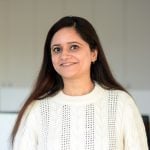The first step towards software development is to choose the best development methodology that suits your organization’s culture, team size, flexibility status, and business and functional requirements. There are different types of software development methodologies that have evolved over the years to address the shortcomings of its predecessors.
For example, the Waterfall did not allow to-and-fro motion across the development stages, which led to the evolution of Agile that offered iterative and incremental development.
There are scenarios at play — it might be the right decision to stick to your current development methodology, or you will have to consider the transformation.
To call off the confusion and make informed decision making, let’s discuss the latest software development methodologies and their pros and cons.
Here’s a comparison guide that will help you rightly choose from among top 7 software development models.
What is Software Development Methodology?
Software development methodology introduces a specific process that needs to be followed for successfully designing, developing, testing, delivering, deploying, and maintaining software products.
All the most used software development models define particular stages or phases, which, in turn, is known as the software development life cycle. The generalized stages of SDLC include — requirements gathering, design, development, test, and deployment. However, different methodologies support their own defined approach to navigate through these generalized stages.
The software development market is scaling now that COVID-19 has brought remote work to reality.
Revenue in the Application Development Software segment is projected to reach US$143,387.0m in 2021. — Statista
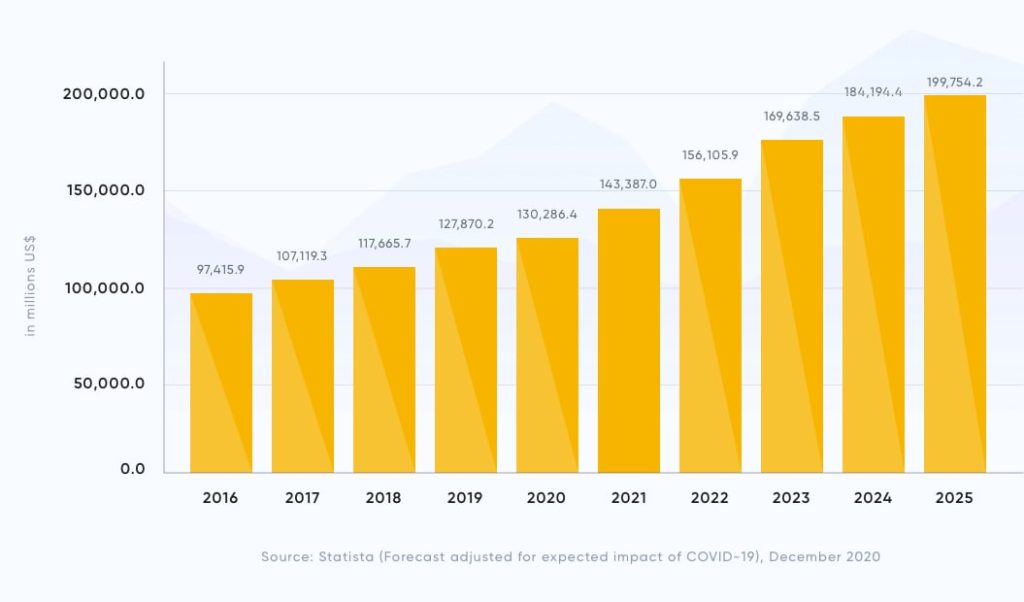
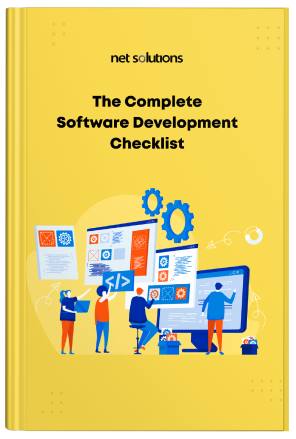
We respect your privacy. Your information is safe.
Popular Software Development Methodologies: Comparison
Let us discuss the top software development models in the order of their evolution:
1. Waterfall Software Development Methodology
Introduced by Dr. Winston W. Royce in a paper published in 1970, the Waterfall Methodology is a sequential, linear software development process of project management.
The Waterfall Approach focuses on the logical progression of all the steps involved in the software development life cycle (SDLC).
Once the development team moves on to the next stage of the development, moving backward is restricted, which is also the biggest con of the Waterfall approach.

Whenever there is a mention of traditionally existing software development models, Waterfall is the first that comes to mind. But, that does not mean that this methodology is obsolete and out of practice.
The Waterfall model is a breakdown of project activities into linear sequential phases, where each phase depends on the deliverables of the previous one and corresponds to a specialization of tasks. — Agile Product Development Report 2020, Net Solutions
Pros and Cons of the Waterfall Model
Here is a table that enlists the benefits and downfalls of the Waterfall development approach:
| Pros | Cons |
|---|---|
| Requirements are constant — everyone on the team has an understanding of what they are building from early on | Moving backward across stages is not an option with Waterfall. It is only a one way street with no scope to change |
| Easy management of the project — as there exist a clean structure and defined steps with no to-and-fro movements | Waterfall does not include the end-user or client perspective. If their requirements change at any stage of the development process, the Waterfall model fails to address them |
| For small-scale software projects where requirements are precise, Waterfall is the best software development models | One-time testing efforts delay the lead time. Waterfall conducts testing only after development is complete, which, in turn, complicates and extends the testing, reporting, fixing, retesting, and launching time |
2. Agile Software Development Methodology
The agile software development methodology is an incremental and iterative approach to software development. It follows the same set of steps as that of the Waterfall model, but unlike Waterfall, the Agile methodology allows moving to-and-fro across stages.
Agile Development roots back to the 12 principles and 4 values of Agile Manifesto. Every organization that follows these values and principles aggressively — practices Agile as its software development methodology.
It is the most commonly used software development models as it introduces:
- Speed
- Flexibility
- Cross-functional Setups
- Collaboration
- Communication
99.3% of the surveyed organizations have adopted the Agile process or are experimenting with it. — Agile Product Development Report, Net Solutions
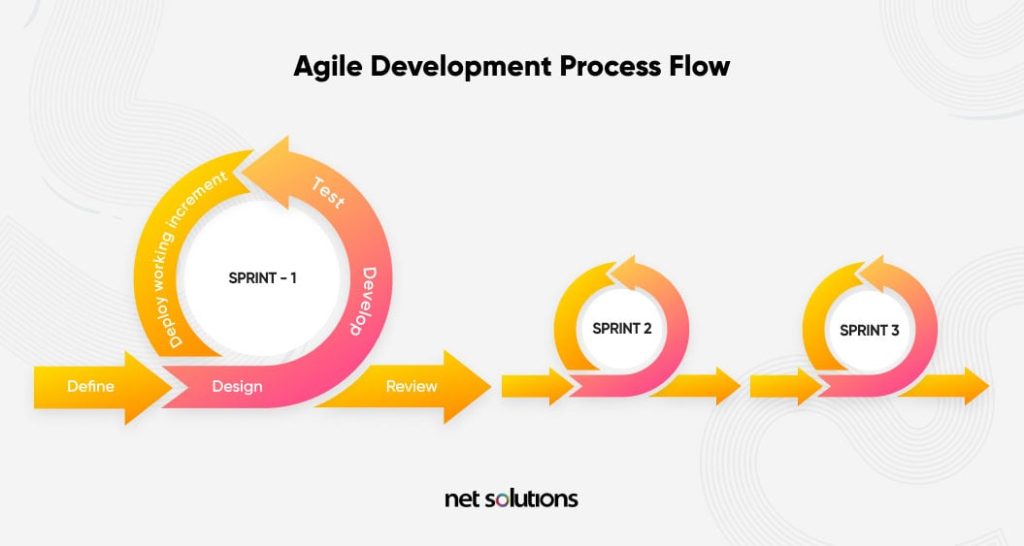
The agile team (designers, developers, and testers) works in time-boxed sprint cycles to work collaboratively to complete a task aligned. In case changes need to be introduced to a developed user story in Agile, it is added to the product backlog where the team can prioritize and work on it again.
Pros and Cons of Agile Software Development Methodology
Here is a table that highlights the pros and cons of the Agile software development model:
| Pros | Cons |
|---|---|
| Faster time-to-market as it introduces minimum viable product (MVP). An MVP includes the basic must-have features and launches it in the market. | Scope creep, i.e., the requirements tend to increase invariably throughout the project’s timeline |
| Agile is a customer-centric development approach as it keeps their perspective, requirements, and feedback in mind. This further helps in ensuring a product-market fit | There is a lack of documentation for the process that Agile development for a particular project will follow. This is due to ever-changing software requirements |
| Agile testing is done at the end of every sprint cycle, thus, reducing the efforts and time to test the software. This, in turn, also ensures a faster time-to-market | Agile anti-patterns can lead to breaking points in team productivity. Some of these anti-patterns include:
Miscommunication Unclear Requirements Gold plating Ignorance of the sustainable pace Considering Discovery and Delivery as independently existing concepts |
| Agile kills siloes! Cross-functional teams are an added advantage as everyone from designers, software engineers, and testers work collaboratively towards a common goal | Agile is suitable for small teams where collaboration and communication can easily happen and mostly suit startups and mid-level projects. In the case of large-scale projects such as enterprise-level, SAFe is a better approach |
3. Feature-Driven Development (FDD)
Feature-driven development is also an iterative and incremental software development methodology similar to Agile development methodology. However, FDD is primarily a feature centric approach where the development team is assigned tasks based on the finalized feature list.
This development methodology comprises five steps, and every feature further includes six milestones per feature to track its progress. The lifecycle of the FDD model is illustrated below:
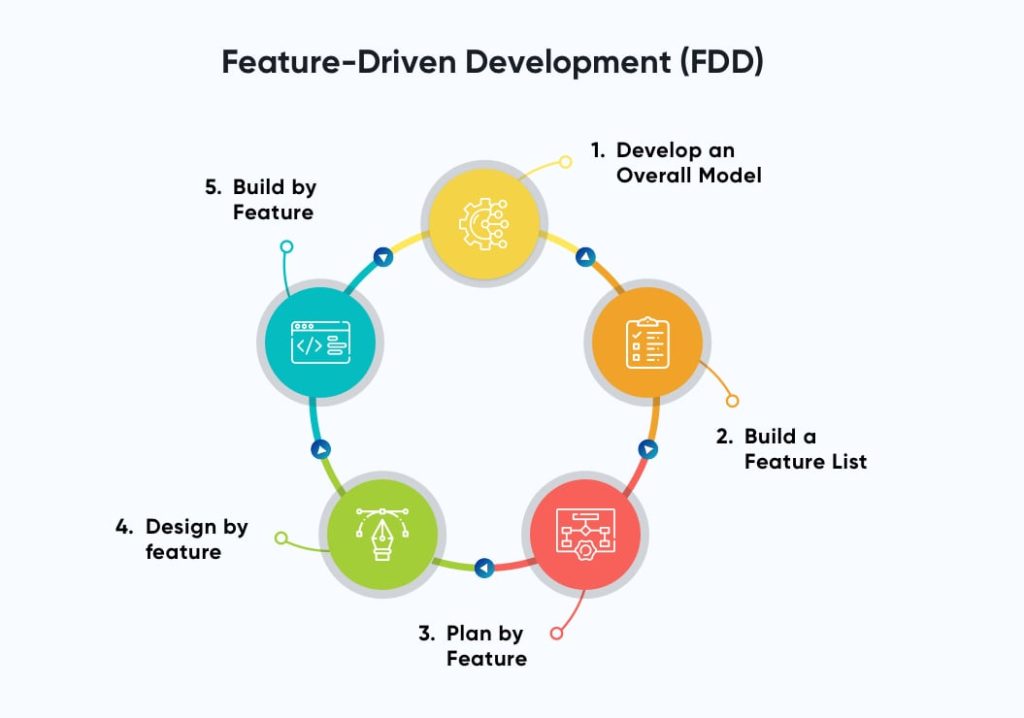
Pros and Cons of FDD Software Development Methodology
Here is a table that highlights the pros and cons of the Feature-Driven development methodology:
| Pros | Cons |
|---|---|
| FDD uses documentation for facilitating communication and thus has fewer meetings | Does not emphasize collective or shared ownership, unlike Agile. FDD focuses more on individual ownership of features |
| Relies on a user-centric approach as it considers the client as the end-user | FDD lacks feature documentation. i.e., the description of the feature that helps client/end-user understand its purpose and context is not supported |
| FDD is a scalable methodology and can accommodate an increase in size and scope of the project | FDD is not ideal for small-scale projects where the developer team is restricted to 1-2 in number |
| Focuses on individual features, which makes it easy to track and iterate through them. This easy management thus helps minimize technical debt | The chief programmer wears multiple hats as he acts as a — designer, coordinator, and even a mentor to the team. So many roles put a burden on the chief programmer |
4. Lean Development
The lean development methodology is an extended version of Agile software development methodology.
Lean development relies on the belief that only the changes that require the least effort, are critical, and demand minimal time should be implemented. The methodology follows the lean manufacturing principles promoted by Toyota.
Lean development methodology works on seven primary principles, which include:
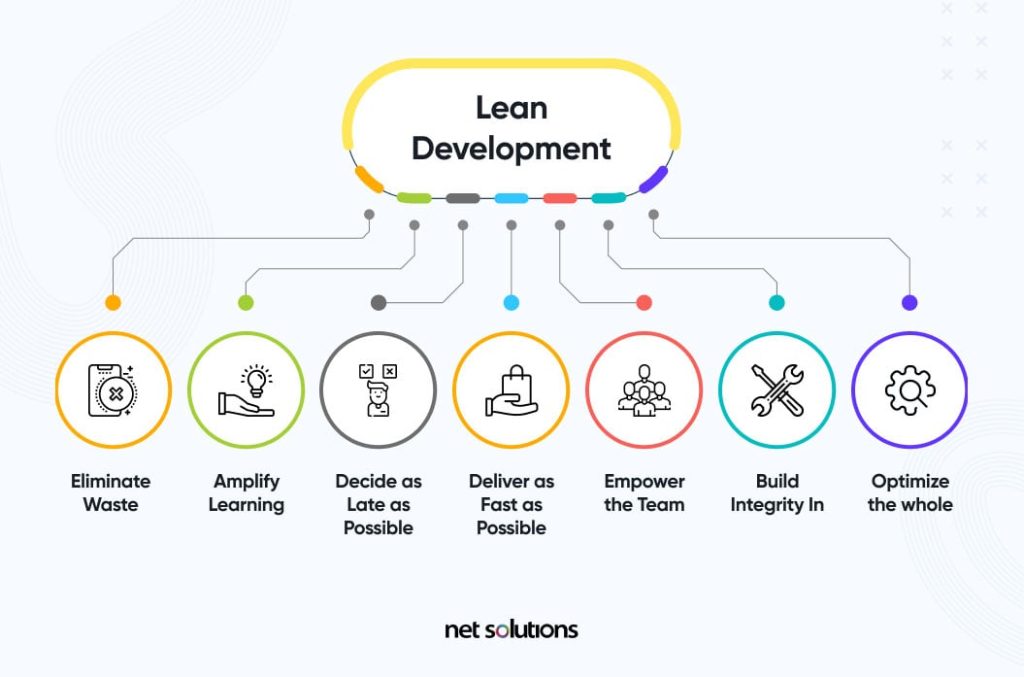
Pros and Cons of Lean Software Development Methodology
Here is a table that highlights the pros and cons of the Lean software development model:
| Pros | Cons |
|---|---|
| Aims for quick MVP development and delivery and within a limited budget | Learning is not part of this methodology. Only if the developers are highly skilled and experienced, the methodology can help |
| Changes are well thought through and planned, which, in turn, help minimize the expenses | A business analyst is vital for the success of the project. In case you lack a skilled team of business analysts — it can lead to feature creep |
| The development team gets the freedom to make project-related decisions. This motivates them and also gives a sense of ownership, which, thus increases productivity | Lean offers too much flexibility. It allows the discovery part to evolve with time, but too much of this flexibility can lead to extended delivery time |
5. Rapid Application Development (RAD)
Rapid Application Development methodology roots out from Agile methodology and prioritizes adaptability over planning. RAD centralizes prototype development to demonstrate design specifications.
This methodology is well suited for software projects where user interface (UI) requirements are primarily taken into consideration.
The four phases of RAD include:
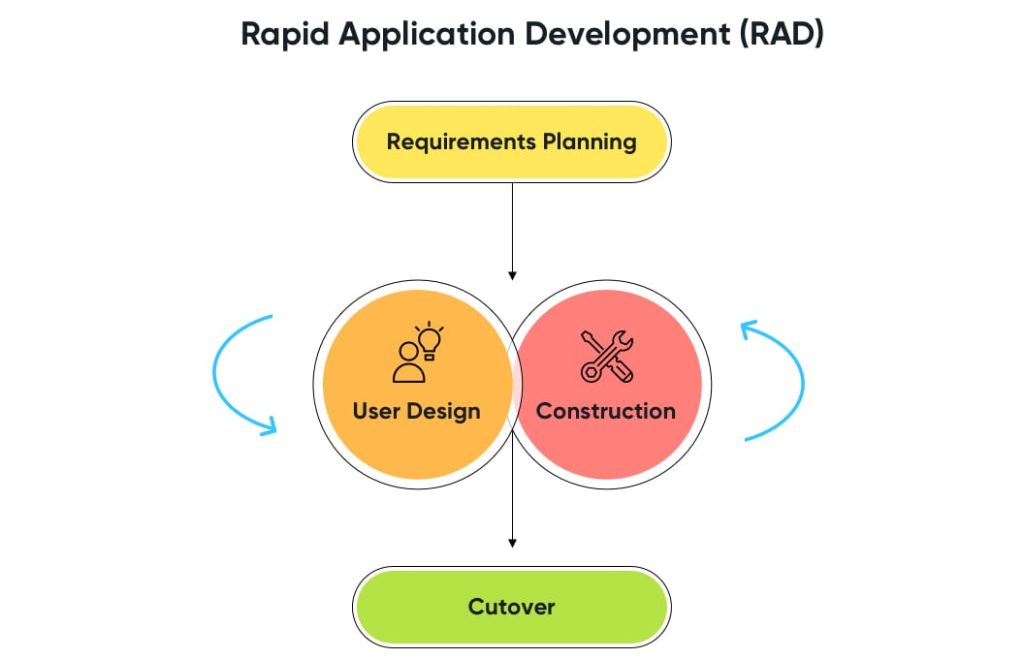
Pros and Cons of Rapid Application Development Methodology
Here is a table that highlights the pros and cons of Rapid Application software development model:
| Pros | Cons |
|---|---|
| Delivers quality products as RAD emphasizes prototype development. This way, product validation happens at an early stage, leading to better quality software | Does not focus on non-functional requirements as they are mostly related to the backend of the system |
| Reduces risk as users are involved early on in the process | RAD offers flexibility, but that implies less control. If you are looking for more control over the software development process, RAD is not for you |
| There is a high probability that the projects are completed on time and within budget. This is because RAD facilitates incremental development | RAD lacks scalability. If the project size and scope is large and can increase during development, it can get challenging to deliver the project |
6. Spiral Model
The spiral model focuses on early risk identification and mitigation. This model can be referred to as an in-between version of Agile (iterative development) and Waterfall (sequential linear development).
The Spiral model supports four phases, which include:
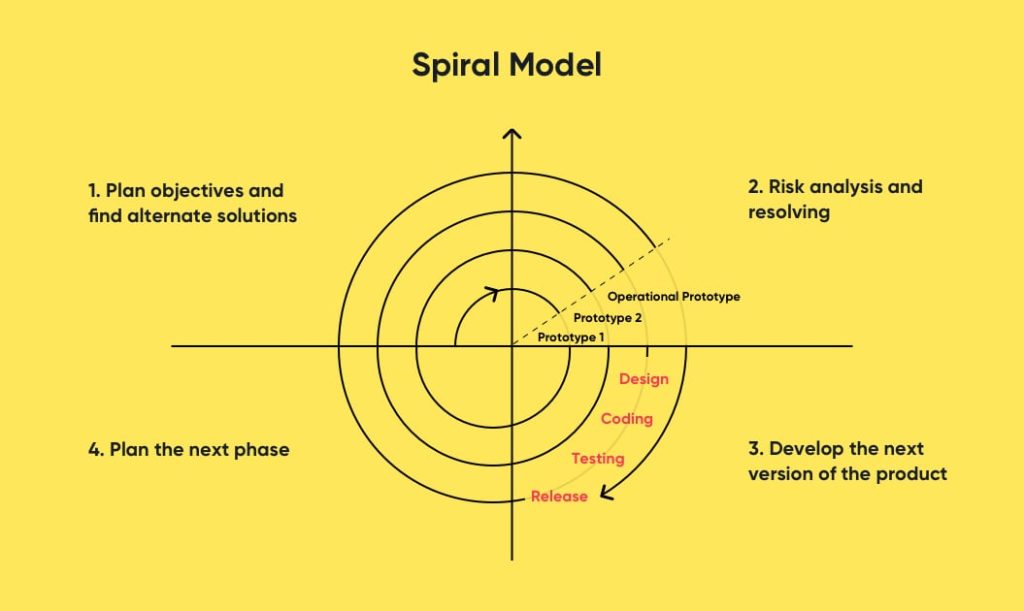
In the spiral model — a feature is considered done once it passes the customer evaluation stage. In case there are any new changes, the spiral model follows the linear approach to accommodating them.
Pros and Cons of the Spiral Model
Here is a table that enlists the benefits and downfalls of the Spiral development approach:
| Pros | Cons |
|---|---|
| The new and changing requirements can be easily accommodated with the help of iterations | It can get expensive for small projects with low risk involved |
| Focuses actively on developing prototypes, thus leaving a low probability of product failures | There is always a risk of not meeting the deadlines and budget as the spiral cycle might run indefinitely |
| Customer feedback is accommodated at the end of each development cycle. Thus, ensuring product-market fit from early on | For ensuring foolproof development, the standards and best practices of Spiral need to be followed aggressively |
| The risky functionalities of the product are developed before moving ahead with the less risky ones, in turn ensuring better risk management | Extensive documentation is required as the development goes through several intermediate phases |
7. Scaled Agile Framework (SAFe)
Scaled Agile Framework (SAFe) is suitable for enterprise-level software development and combines the values of Agile, Lean, and systems thinking.

According to the 14th State of Agile Report, 35% of the respondents (over 40,000) continue to use SAFe, making it the most popular scaling method for software development.
The scaled Agile framework is suitable for large projects with complex requirements on an enterprise level. Here’s how SAFe extracts value from each of the mentioned building blocks:
- Agile — the values and principles mentioned in the Agile Manifesto
- Systems Thinking — the mindset that the teams, resources, and business units need to work together for effective software development
- Lean Product Development — principles of lean development and the mindset to eliminate waste while focusing on quick and quality delivery
Pros and Cons of the SAFe Model
Here is a table that enlists the benefits and downfalls of the SAFe development approach:
| Pros | Cons |
|---|---|
| Integrates different development processes and mindsets into one framework | SAFe promotes the use of some aggressive protocols while developing software, which does not leave much freedom for the developers to experiment and improvise |
| With SAFe, the quantity of bugs decreases, which further helps in increasing the quality of the product | It does not suit small scale organizations working on small size projects |
| According to Scaled Agile Inc., the business results of SAFe include:
30-75% faster time to market 25-75% increase in productivity 20-50% improvement in quality 10-50% increased employee engagement |
SAFe follows a top-down approach. Following this approach, the key roles such as the product owners, the developers, the Agile testing team, and designers do not get to make critical decisions |
What is the Best Software Development Methodology?
We discussed the top seven software development models here, but it still does not trim the confusion around which should be chosen when. So, here’s are the most suitable use cases for different software development methodologies:
- Use Waterfall — when requirements are fixed, time and budget are variable
- Use Agile — when requirements are variable and not definitive, incremental development is required, and you have a working Agile set up at your workplace
- Use Feature-driven development — when you are working on a large software project that focuses on features, and you have a good team strength to divide the feature-centric work
- Use Lean development — when you are working on a small project that needs to be delivered in a short time
- Use Rapid Application Development — when you have tight deadlines to adhere to. RAD includes only four stages of development, thus facilitating fast delivery
- Use Spiral Model — when the software development process needs continuous risk evaluation, and there is a reasonable time bracket for validating the release from users
- Use Scaled Agile Framework — when the development team is distributed and large and is working on large and enterprise-scale software development
In all, choose a methodology for software development that suits your business and the project’s requirements, even if it means switching from an existing methodology.
Change is good if you strategize and take baby steps towards the transformation.
